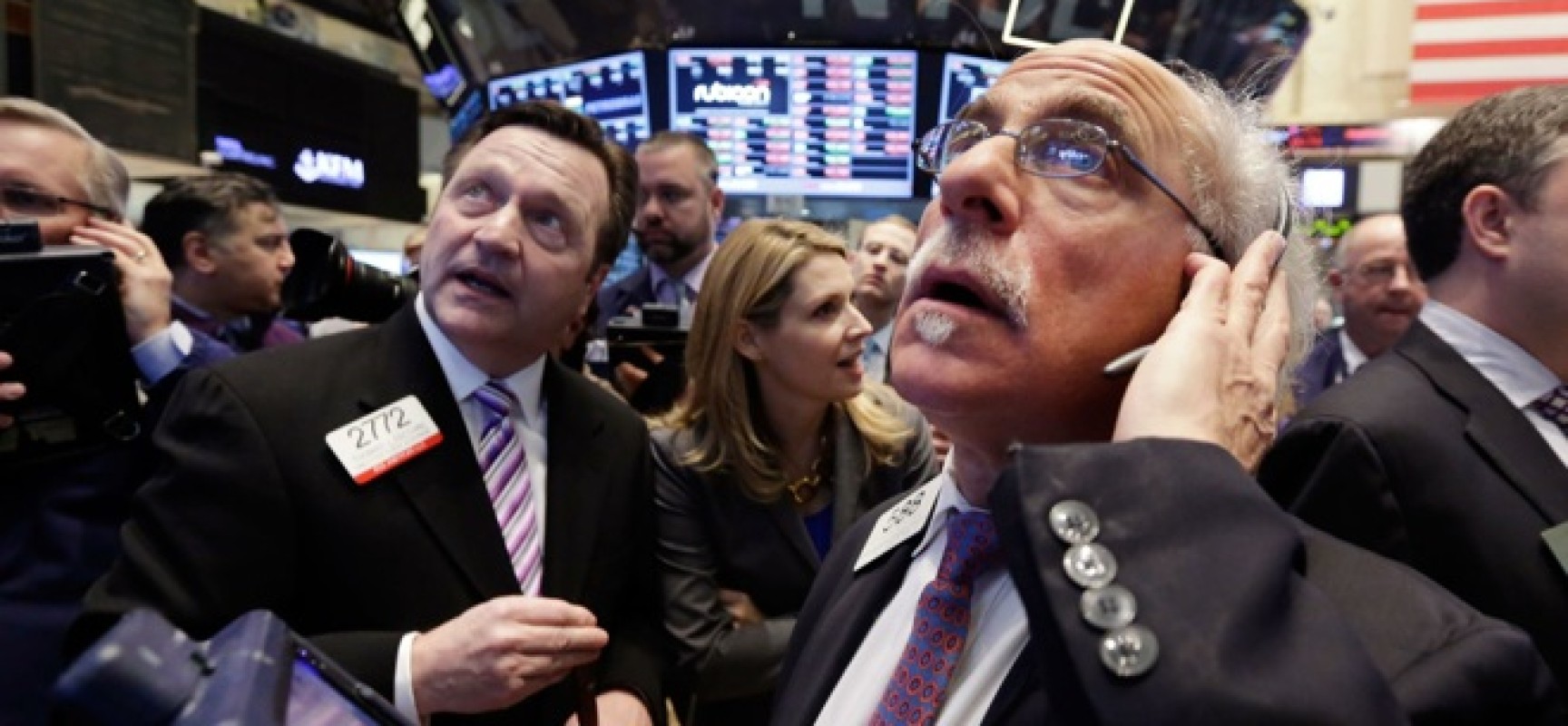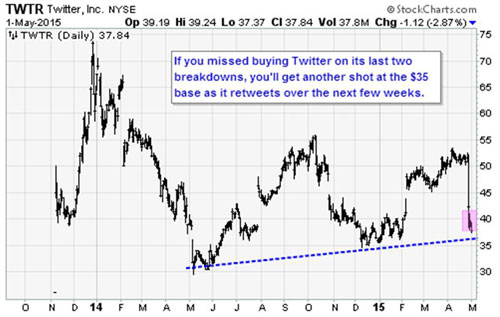Bonds & Interest Rates
Greece faces another big deadline.
By tomorrow, the debtor nation par excellence must come up with €750 million ($836 million), which it owes in loan repayments to the International Monetary Fund.
If it doesn’t come up with the cash, it joins the ranks of Somalia, Zimbabwe and Sudan in being late repaying IMF loans.
This has prompted another emergency meeting in Brussels by Greece’s creditors to discuss the “Greece problem.”
Maybe Greece will default. Maybe it won’t. But if it does, it hardly spells doom for the euro zone.
After all, Greece contributes all of 2% of the 19-country euro zone’s GDP.
And the total value of Greek debt is just €340 billion ($378 billion). So, if it decided not to pay a cent of that back – highly unlikely even in the event of some form of default – the other 18 euro-countries could cover the fallout by borrowing 3% more collectively.
Meanwhile, as we’ve been pounding the table on lately, the real story is that European stocks continue to handily outperform US stocks this year.

As you can see above, the Euro Stoxx 50 Index, which tracks 50 of the largest blue-chip European stocks, is up 16% so far in 2015 versus a 2% gain for the Dow.
 With continued volatility in global markets, today one of the greats in the business sent King World News a powerful piece warning about a loss of confidence in the Fed and the most important data in 6 years. He also discussed what is happening in the metals and currency markets.
With continued volatility in global markets, today one of the greats in the business sent King World News a powerful piece warning about a loss of confidence in the Fed and the most important data in 6 years. He also discussed what is happening in the metals and currency markets.
May 8 – Overnight bond markets were mixed, though German 10-year bunds continued to take a beating, trading as high as 65 basis points before rallying a bit. World equity markets were slightly weaker. The early going here saw the indices sort of hugging unchanged, though slightly red through midday. In the early afternoon though, a small party started and the market closed roughly 0.5% higher. I guess most folks were not too worried ahead of tomorrow’s (Friday’s) nonfarm payroll roulette wheel.
Some analysts seem to think there’s an inflation scare in the air. Their thinking is that Europe’s economy is looking a tad better while the U.S. economy is looking a tad weaker.
Therefore, they claim, the dollar is going to fall while the euro rallies, hence, inflation is coming back to the U.S.
But the fact of the matter is that nothing could be further from the truth! Let’s take a closer look at their argument to see how ridiculous it is. It’s also a good lesson on how silly it is to use fundamentals to make forecasts.
I ask you, how does Europe’s economy, looking a wee bit better last month, mean that the euro has bottomed? Since when does one month of economic indicators make a trend?
And why is a slight improvement in Europe’s economy the kiss of death for the dollar?
Europe is stuck in a nightmarish depression of no economic growth in the strongest European economies and sinking growth in the weakest.
Prices are falling throughout the euro region. Unemployment is hovering at record highs. Debt to GDP levels are going virtually straight up.
And Europe’s leaders are still sacrificing the jobs and livelihoods of tens of millions of people to help make sure bondholders are paid!
Anyone with a clue of what’s going on in Europe would recognize that …
A. One month’s improvement in economic stats doesn’t make a trend for any country, let alone Europe.
B. Europe is still headed down the tubes, and with it the euro.
C. Anyone with half a brain who looked at a chart of the euro, like the one I have for you here, would notice that the euro …
– Has suffered a major collapse that did devastating damage.
– Is still in a major downtrend.
– And its recent bounce is tiny!
Meanwhile, on the flip side of these analysts’ arguments, — that the U.S. is looking less good — sure, that’s true too — again, if you look at just one month’s numbers, like the latest 0.2 percent GDP.
But the facts for the U.S. are that …
A. The U.S. economy is still the strongest of the developed nations, much stronger than Europe’s economy.
B. The U.S economy has the deepest, most liquid capital markets on the planet, making them the easiest place to invest and with the most opportunities.
C. U.S. markets remain the last bastion of capitalism in the world, and certainly in the Western world, where so many governments are turning more and more socialistic.
Moreover, I fail to see how a weaker U.S. economy can usher in inflation!
Bottom line: Such arguments based on fundamentals are full of holes. They are complete nonsense. Anyone with half a brain can poke holes in such arguments.
Meanwhile, as I just showed you with the chart of the euro …
FIRST, the euro’s bounce is near ending, and a renewed downtrend is about to take root.
SECOND, conversely, the dollar’s recent pullback is near ending, and a new leg up is about to begin.
THIRD, consider the action in gold of late. If inflation were coming back, why is gold crashing?
The fact of the matter is that gold is caught in a massive deflationary bear market that is not yet over. It may bounce one more time, but mark my words:
New lows below $1,000 in gold are coming, and silver will likely fall to the $12.50 level.
FOURTH, besides gold, there isn’t a single tangible asset market that supports the notion that inflation is coming back.
– Natural gas prices remain weak at the knees.
– Grain markets are caught in a deflationary spiral.
– Even base metal prices, like copper, iron ore, aluminum and zinc all remain very bearish!
So where again, is the inflation scare?
Bottom line: Don’t buy into the nonsense that just because Europe’s deathly ill economy caught a breath of air that the U.S. dollar is going to now collapse and inflation is coming back.
It’s a bunch of baloney, espoused by analysts who rely too heavily on fundamental analysis and who can’t see the forest for the trees.
There have been no recent trend changes in any markets. Period. The dollar remains in a bull market, the euro in a bear market. Precious metals and commodities in a bear market. U.S. stocks, likely topping short-term, long-term very bullish.
Best wishes, as always …
Larry
– See more at: http://www.swingtradingdaily.com/2015/05/06/an-inflation-scare-coming-i-dont-think-so/#sthash.Rj8BMOEE.dpuf
This past week saw a huge swing in interest rates at the long end of the curve with the long bond in particular getting knocked for a loop.
As you can see from the chart, prices plunged lower Tuesday-Friday with support being broken on Tuesday. The market had an intraday recovery that day but the next day, it commenced plunging again, this time being unable to recapture broken chart support which “reversed polarity” and served to cap the contract on the upside.
On Thursday, once the unemployment numbers were released, the bonds broke yet another layer of support ….continue reading & view 4 more charts HERE
The US Treasury market topped with our upside Exhaustion Alerts in January and then found initial support around the weekly moving averages (30-week average on the long bond and 40- week on the TLT). The bounce was anticipated to provide a selling opportunity in the TLT in the range of 133 to 135. The rally petered out at 132.64 and is now breaking down. The major support will now be at the 100-month moving average around 108 on the TLT. This equates to a 2.7% yield on the 10’s and 3.6% on the 30s.

The opinions in this report are solely those of the author. The information herein was obtained from various sources;
however we do not guarantee its accuracy or completeness. This research report is prepared for general circulation and is circulated for general information only. It does not have regard to the specific investment objectives, financial situation and the particular needs regarding the appropriateness of investing in any securities or investment strategies discussed or recommended in this report and should understand that statements regarding future prospects may not be realized.
Investors should note that income from such securities, if any, may fluctuate and that each security’s price or value may rise or fall. Accordingly, investors may receive back less than originally invested. Past performance is not necessarily a guide to future performance. Neither the information nor any opinion expressed constitutes an offer to buy or sell any securities or futures contracts. Foreign currency rates of exchange may adversely affect the value, price or income of any security or related investment mentioned in this report. In addition, investors in securities such as ADRs, whose values are influenced by the currency of the underlying security, effectively assume currency risk. Moreover, from time to time, members of the Institutional Advisors team may be long or short positions discussed in our publications.
April 22, 2015 Technical observations of Ross Clark

















